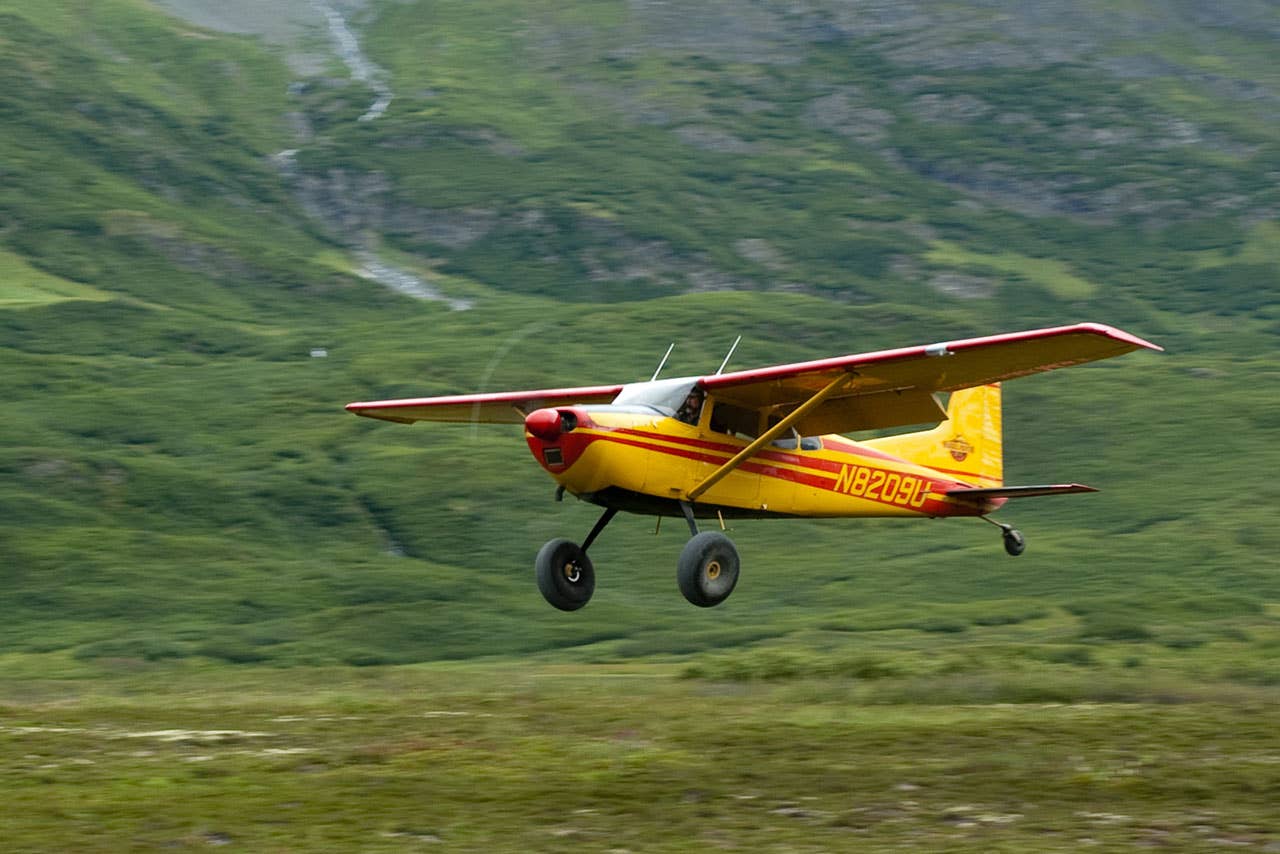Bush Planes Rule. Here’s Why.
For more than a century, bush flying has built bridges and saved lives.

Bush Plane via Shutterstock
The bush, the backcountry, the outback, the wilds.. no matter what you call it, flying in the bush requires pilots long on experience and confidence and airplanes that can handle the abuse and be able to bounce back from brushes with rocks and branches. Bush flying would have been the very first kind of flying, except that early airplanes were too fragile to be put to use on rough strips. but by the 1920's, the equipment, from airframes to powerplants, had improved significantly, making the creation of bush flying about as hard as falling off a snowbank. Skis and floats came along shortly, along with new models of planes designed, if not expressly, then seemingly so, for inhospitable terrain. Bush flying remains a critical part of the world's transportation infrastructure, linking remote locations with goods, services and care, in the process saving countless lives.
Claimed first bush flying: Canada 1919, Curtiss HS-2L flying boats at Lac-a-la-Tortue, Quebec
Early popular bush planes: Curtiss JN-4 Jenny
Reason: Relatively rugged, cheap and plentiful
Early legendary bush pilot: Earl Frederick Crabb
Other Crabb claim to fame: WWI ace
Number of enemy planes downed: Six in three-month span in 1919
First bush flying gigs: Pioneering mail pilot, U.S. Forest service pilot in Maine
Alaska's first bush pilot: Carl Ben Eielson
Day job: Math teacher
Early bush flying jobs: Mail hauling, transportation, fire spotting, game tracking, search and rescue
Key design feature: Taildragger (conventional) gear
Benefits: Mainly terrain clearance in rough terrain
Last year of full J-3 Cub production: 1947
First year of Piper PA-18 Super Cub production: 1949
First Super Cub in Alaska: 1949
Major differences: Flaps, more powerful engine, higher gross weight, solo pilot in front seat
Number of PA-18s produced: Around 15,000 Last year of full production: 1983 (reintroduced from 1988 to 1994)
Popular mods forPA-18s: More powerful engines, large tires(bush tires), floats
Purpose-built bush plane: De Havilland Beaver, 1947-1967
Power: Pratt & Whitney R-985 Wasp Junior, 450-hp, radial design
Beavers built: 1,657
Percentage of those purchased by U.S. Army: Just under half
Beavers still busy: Unknown, in the many hundreds
Primary applications: Transportation, freight hauling, float transport, sky diving, game spotting, mail-carrying
Developed into: De Havilland Otter, Twin Otter
Type owners: Viking Aircraft, since 2006
New production Beavers: None yet; many rebuilds
Most useful bush plane mod: So-called Tundra tires
Features: Large size, low inflation
Design characteristics: Load absorption, easier rolling on rough terrain
Inventor: Alvin J. Musselman
Year introduced: 1929
Company in on the action early: Goodyear
Largest Goodyear bush tire: 46 inches diameter
Year of FAA safety tests of big-tire planes: 1994
Reason: Suspicion that the tires were a safety hazard
Problems suspected: Raised stall speed
Problems discovered: Poor forward visibility on taxi due to higher deck angle

Subscribe to Our Newsletter
Get the latest Plane & Pilot Magazine stories delivered directly to your inbox






